Sygryda Storråda, also known as Świętosławą. There is no other heroine so extraordinary in the history of medieval Poland. The famous Viking queen has been devoted to a whole sea of articles, novels and scientific works. And there is only one problem with it. New research shows that there was no such character at all.
The biography of Świętosława seems to fully justify the scale of the interest. According to the most popular version, the princess was born in the 1860s as the daughter of Dobrawa or an earlier pagan wife of Mieszko. As soon as she grew up a little, she was married to the ruler of the Swedes, Eric the Victorious.
It was the beginning of a reign of incredible twists and of a unique character.
A career worthy of a novel
Świętosława gave birth to the heir to the throne, and when her husband died, she plunged into the whirlwind of great politics. She personally made peace with his greatest enemy, the ruler of Denmark, Swen Forkbeard. As a result, she became the wife of Swen herself, and then helped him conquer Norway. This last step was to be a revenge for the fact that the Norwegian King Olaf had previously broken her engagement with her, breaking her heart.
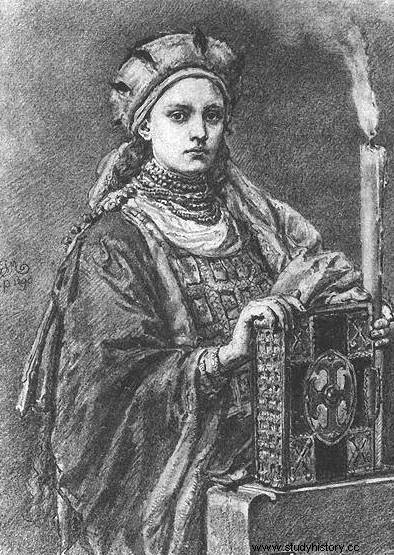
According to the most popular version of the history of Świętosława on the Vistula River, she was supposed to be the daughter of Mieszko and Dobrawa (source:public domain).
In her new homeland, she gave birth to four children, including two future monarchs:Harald I, who ruled Denmark, and Canute the Great - the king of Denmark, England and Norway. Her son from her first marriage, Olof Skötkonung, was also on the Swedish throne, so it is not surprising that historians named Świętosław as the "mother of kings".
After all, the whole of Scandinavia was under her shoe, and the Baltic Sea became almost her private lake. Over the next centuries, her descendants ruled half of Europe, including the principalities of Ruthenia. Świętosława herself, on the other hand, gained immortality as a heroine of sagas and legends. In the stories repeated at the feast tables and on the decks of Viking boats, she appeared as a formidable femme fatale . A woman who even happened to burn alive an unresponsive candidate for a husband to scare away other contenders for the crown.
The resume crackles at the seams
The life of Świętosława - who had argued with Swen after a few years, was expelled from Denmark by him, and then returned to her after her husband's death - seems so overloaded with facts that one could bestow on them several different characters. And that's probably what you should do.
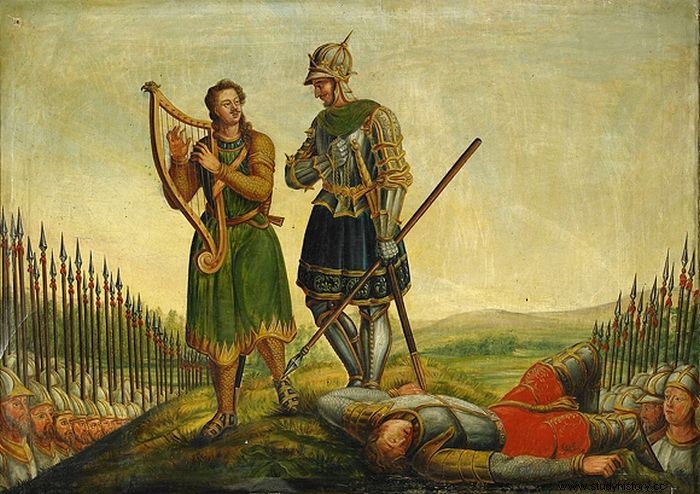
The first husband of Świętosława was to be the Swedish ruler Eryk the Victorious (here in the painting from 1835). However, there are many indications that these two have never even met (source:public domain).
Already several decades ago, Gerard Labuda questioned any relationship or engagement of Saintslav with Olaf, the ruler of Norway. He also referred to the past the old theories that made it possible to understand why the Piastowe married the princess to the king of distant Sweden, Erik the Victorious.
In 2004, the Poznań genealogist, Rafał Prinke, went one step further. He stated that the biography of Świętosława-Sygryda was not only creaking at the seams, but also should be completely removed from textbooks and encyclopedias. For a very simple reason. In his opinion, such a character did not exist at all.
There are many texts from the period about the marriage of Eric the Victorious and Sven Widłbeard. However, they are contradictory and rarely mention the lineage of the queens, let alone their names. Not once does a Świętosława appear in them and it's high time to definitely stop referring this name to the ruler from Wielkopolska.
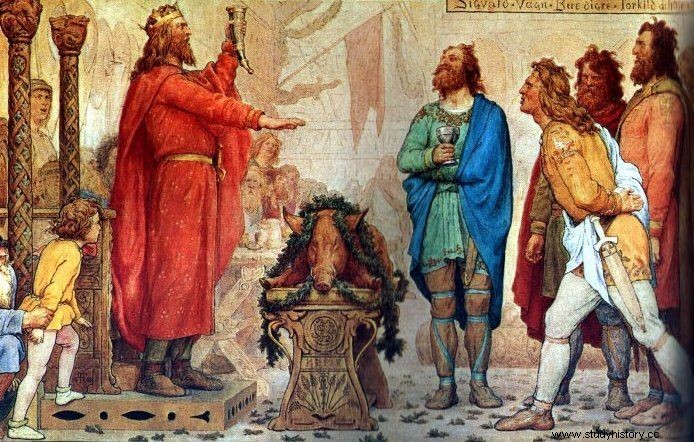
Swen Widłobrody in the 19th century illustration. This Danish ruler was most likely actually the husband of Mieszko's daughter. Only that her name was not Świętosław (source:public domain).
Concealed name
It was deduced by historians because it is known that Swen had a daughter, Świętosław. Therefore, it was arbitrarily assumed that the girl inherited her name from her mother. However, a similar idea is in contradiction with the customs prevailing in Scandinavia.
The culture of the then Sweden or Denmark almost ruled out giving children the names of still living relatives and parents. It was in bad taste, and it was even believed that such a step could bring misfortune on the family. In the surviving texts - most of them of a literary rather than historical character - only Sygryda or Gunhilda appear as spouses of Erik and Sven.
In Poland, it is commonly said that it is about the same character, possibly bearing two (and considering Świętosława even three) different names. In fact, however, very little speaks for a similar interpretation. Throughout the 20th century, it was questioned by Swedish historians who knew alternative versions of history from sagas and chronicles. It also raised doubts among German scientists.
Only in Poland, with determination worthy of a better cause, insisted on the "maximum variant". All the interesting events that took place in Scandinavia at the turn of the 10th and 11th centuries were to be inextricably linked with Mieszko's daughter. The all-powerful gray eminence, changing men like gloves and deciding the fate of Northern Europe alone. According to Rafał Prinke, things were completely different.
Swedish aristocrat… Sygryda
Eryk Zwycięski married a woman named Sygryda, but she had nothing to do with Poland. According to one Icelandic saga, she was the daughter of the Swedish Viking, Skoglar Toste. There is also a tradition according to which Sygryda settled on Gotland in her old age. Meanwhile, on this island there were indeed goods known as "Sighridha leff".
Finally, there are also references according to which Sygrid's nephew ruled western Gotland. If the queen had indeed had the blood of the Piasts in her veins, it would mean that the life of a private Viking in the far north fell to ... one of the brothers of Bolesław the Brave . It's hard to believe such a scenario. It is also difficult to justify Piast's wedding with Eryk, considering that he was a fierce pagan. After a short flirtation with Christianity, he became a staunch opponent of the new faith and a defender of traditional cults.
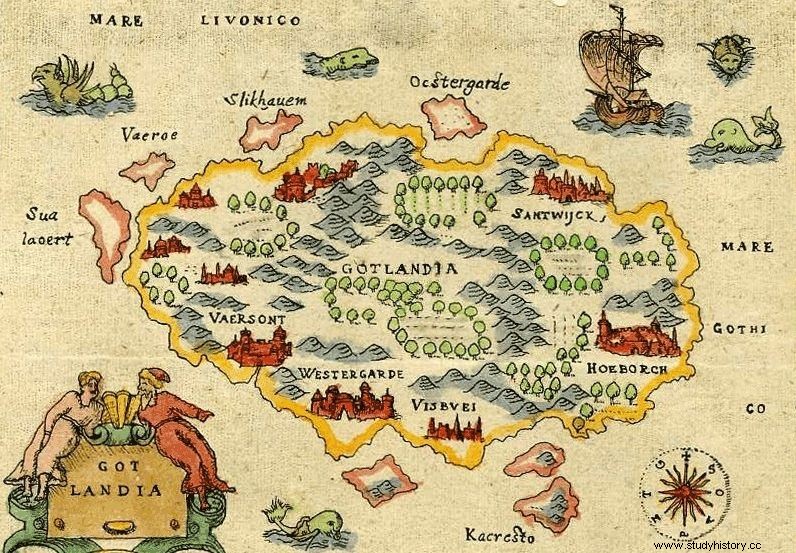
Gotland on a map from the second half of the 16th century. Sygryda was supposed to settle on this island (source:public domain).
Only one medieval historian associated Sygryda with Poland. It was Adam of Bremen, who worked at the end of the 11th century. His account, however, is difficult to accept without reservations. He touched on the relationship between his wife Erik and Bolesław the Brave, apart from the main text of the work, in a commentary scrawled in the margin of the book. This remark is preserved in only four of the twenty-five existing chronicle manuscripts.
Apparently, neither the scribes nor the author himself attached much importance to it. Perhaps the latter did not introduce it to the main text, as he knew that the story he conveyed raises doubts. After all, he called Eric's wife a daughter, not the sister of Bolesław Chrobry (only the copyists corrected it), and he completely confused the entire political background of the relationship. He described the alliance that Eryk actually made. But not with the Piasts, but with the prince of the Obodrites.
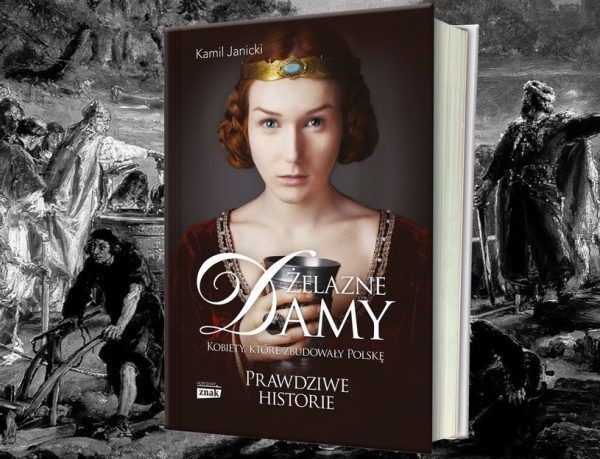
Learn about the fascinating history of women who built Poland in the darkness of the Middle Ages. Ruthless, ambitious, talented. Kamil Janicki's "Iron Ladies" is now on sale !
Two Queens for the Price of One
After the rejection of Adam's account of Bremen, a completely different, much more probable picture of reality emerges. Mieszko had a daughter with an unknown name who became the wife of a Scandinavian ruler - but only one. In the spring or summer of 995 she was married to Sven Widłobrody. She was called by which the husband and his surroundings would break their tongues, and therefore in the new homeland she received a new name, familiar to the Vikings. From then on, she was called Gunhilda.
The relationship between Piastówna and the ruler of Denmark turned out to be turbulent and quite short. It was concluded right after Swen, taking advantage of the death of his competitor, Eric, returned from a several-year wandering in the seas of the North. The rich spoils of his expeditions to England allowed him to sit on the throne, but his position was very shaky.
He probably hoped that he would be able to ask for help and armed support from the Piasts, but they were focused on their own affairs. As a result, the relationship with Mieszko's daughter quickly lost its justification.
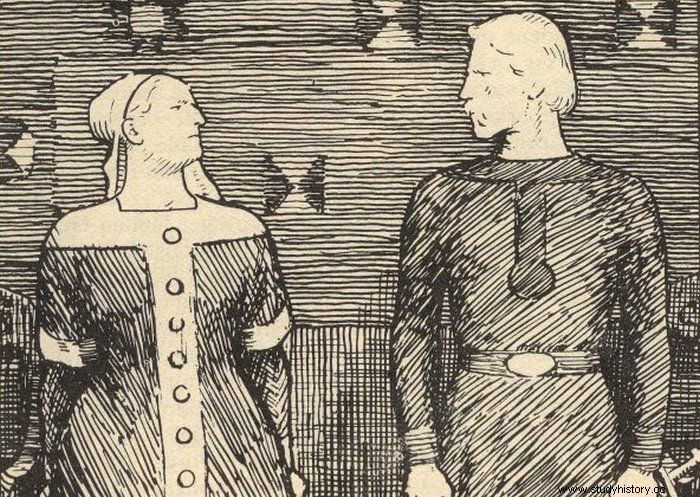
Sygryda and her would-be husband Olaf Tryggvason on a 19th-century drawing by Erik Werenskiold (source:public domain).
A true legacy… Gunhilda
Piastówna bore her husband three children, including two sons - future kings Harald and Canute the Great, as well as one daughter named Świętosława. However, the status of the royal mother did not prevent her from being expelled. Under the pressure of Olof, who ruled Sweden, Swen, surrounded by enemies, agreed to divorce him and take Sygrid as his second wife. Olof's mother, coming from the Swedish aristocracy, and a guarantee of a new alliance.
Sygryda was therefore not a Polish princess, but a woman who disrupted the life of Piastów and sentenced her to banishment. There are many more arguments for this version of history than for the traditional, if not megalomaniacal portrait of the "mother of kings". Gradually, Polish historians also learn about it. And good, because there is no reason to cry over the loss of Świętosława. The scenario separating Sygryda from Gunhilda adds a lot of realism to the character of Mieszko's daughter. He makes an exaggerated supermen into a flesh and blood woman.
***
They have no place in the works of scientists, and the authors of the encyclopedia stubbornly repeat that nothing is known about them. Dobrawa, Oda and Emnilda have been almost completely erased from our history. Completely wrong. Kamil Janicki proves that if it were not for these women, Poland would not exist at all. And that a lot can be said about their lives without resorting to presumptions and fairy tales. This is the fascinating story of the ruthless, ambitious and power-hungry partners of the first Piasts.
Meet her today. "Iron ladies. The Women Who Built Poland ” just went on sale. You can buy the book with a discount on empik.com.
Sources:
The article is based on the literature and materials collected by the author during the work on the book "Iron Ladies. The Women Who Built Poland ” . Find out more by clicking HERE .
- Hare M., Cnut and Lotharingia. Two Notes , 'Anglo-Saxon England', vol. 29 (2000).
- Jasiński K., Pedigree of the first Piasts , Poznań 2004.
- Kętrzyński S., Poland in the 10th – 11th centuries , Warsaw 1961.
- Koczy L., Poland and Scandinavia during the first Piasts , Poznań 1934.
- Labuda G., Fragments of the history of the Western Slavic region , vol. 2, Poznań 1964.
- Labuda G., Poland and Scandinavia in the 9th – 10th centuries [in:] The beginnings of the Polish State. Book of the Millennium , ed. K. Tymieniecki, Poznań 2002.
- Mosingiewicz K., Name as a source in genealogical research [in:] Genealogy - methodological problems in research on Polish medieval society against a comparative background , ed. J. Hertel, Toruń 1982.
- Pac G., Women in the Piast dynasty. The social role of Piast wives and daughters until the mid-12th century - a comparative study , Toruń 2013.
- Prinke R.T., Świętosława, Sygryda, Gunhilda. The identity of Mieszko I's daughter and her Scandinavian relationships , "Historical Annals", vol. 60 (2004).
- Widajewicz J., At the mouth of the Oder in the second half of the 10th century , Poznań 1935, pp. 76-77.
- Wojciechowski Z., Poland on the Vistula and Oder in the 10th century , Katowice 1939.
We recommend:
A different version of the article also appeared in the latest issue of the "Focus Historia" magazine (12/2015).
